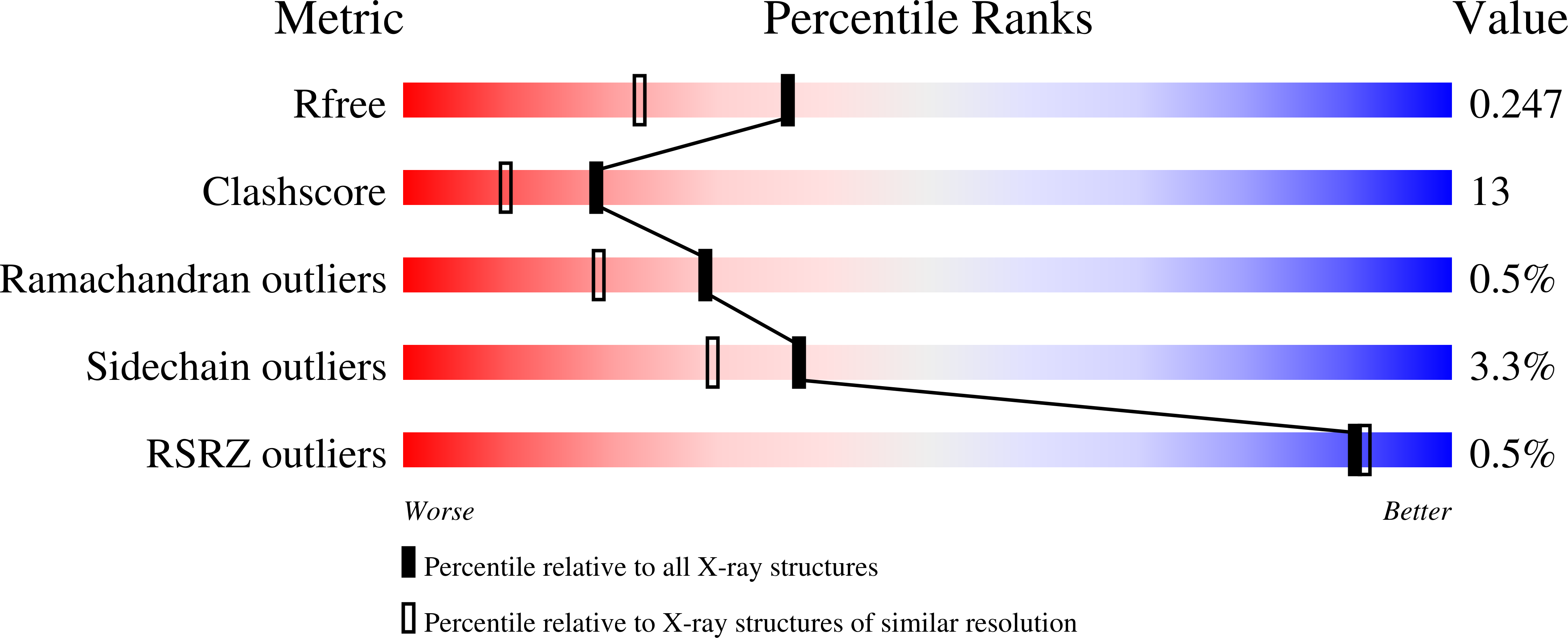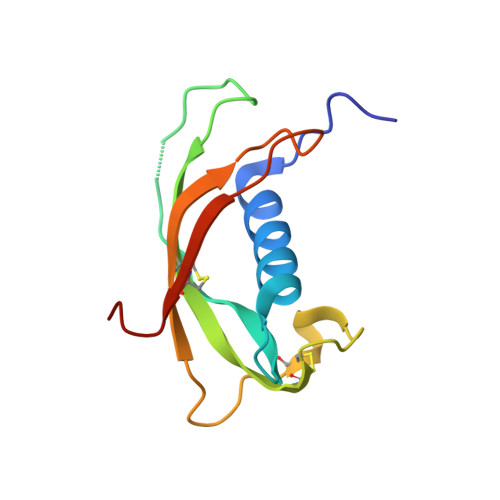Structural and Functional Analysis of the Pro-Domain of Human Cathelicidin, LL-37.
Pazgier, M., Ericksen, B., Ling, M., Toth, E., Shi, J., Li, X., Galliher-Beckley, A., Lan, L., Zou, G., Zhan, C., Yuan, W., Pozharski, E., Lu, W.(2013) Biochemistry 52: 1547-1558
- PubMed: 23406372
- DOI: https://doi.org/10.1021/bi301008r
- Primary Citation of Related Structures:
4EYC - PubMed Abstract:
Cathelicidins form a family of small host defense peptides distinct from another class of cationic antimicrobial peptides, the defensins. They are expressed as large precursor molecules with a highly conserved pro-domain known as the cathelin-like domain (CLD). CLDs have high degrees of sequence homology to cathelin, a protein isolated from pig leukocytes and belonging to the cystatin family of cysteine protease inhibitors. In this report, we describe for the first time the X-ray crystal structure of the human CLD (hCLD) of the sole human cathelicidin, LL-37. The structure of the hCLD, determined at 1.93 Å resolution, shows the cystatin-like fold and is highly similar to the structure of the CLD of the pig cathelicidin, protegrin-3. We assayed the in vitro antibacterial activities of the hCLD, LL-37, and the precursor form, pro-cathelicidin (also known as hCAP18), and we found that the unprocessed protein inhibited the growth of Gram-negative bacteria with efficiencies comparable to that of the mature peptide, LL-37. In addition, the antibacterial activity of LL-37 was not inhibited by the hCLD intermolecularly, because exogenously added hCLD had no effect on the bactericidal activity of the mature peptide. The hCLD itself lacked antimicrobial function and did not inhibit the cysteine protease, cathepsin L. Our results contrast with previous reports of hCLD activity. A comparative structural analysis between the hCLD and the cysteine protease inhibitor stefin A showed why the hCLD is unable to function as an inhibitor of cysteine proteases. In this respect, the cystatin scaffold represents an ancestral structural platform from which proteins evolved divergently, with some losing inhibitory functions.
Organizational Affiliation:
Institute of Human Virology, Department of Biochemistry and Molecular Biology, University of Maryland School of Medicine, Baltimore, Maryland 21201, USA. mpazgier@ihv.umaryland.edu














